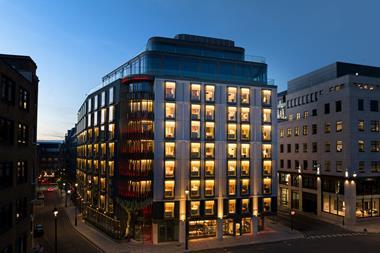Real estate investment into grocery stores leapt by 40% in 2020 reflecting the sector’s resilience during the pandemic.

JLL and Union Investment’s The European Grocery Real Estate Market report says average investment in the asset class has been reasonably consistent at about €4.5 bn pa in the last six years, but jumped to €6.7 bn last year.
If retail parks, which often include a grocery store, are added to the mix, the figure is almost twice as high, at €12.7 bn in 2020, even though relatively few large retail parks traded last year.
JLL says this is set against total investment in all European retail real estate in 2020 of €29.9 bn.
With the €4.5 bn pa grocery figure of recent years accounting for only 10% of Europe’s overall retail investment volumes in 2014-2019, the authors suggest that many investors are under-allocated in the sector.
They acknowledge that sourcing product can be difficult: it is a sector with high levels of corporate ownership and in some countries, The Netherlands for example, there is a strong franchise culture and the fragmented ownership makes building scale hard. The biggest markets are the UK and Germany.
The 70-page report identifies trends which the authors expect to affect the market. There is still uncertainty around the long-term implications of the Covid-19 pandemic on food retailing and the speed of its move online. But the report says that low profit margins will not sustain widespread online sales. Rather, retailers will also continue to invest in their physical stores, enhancing the shopping experience.
As retailers will need to continue raising money to deal with all the change they face, now magnified by the pandemic, this should lead to opportunities for investors. ‘The last major peak in sale-leaseback opportunities was after the Global Financial Crisis when a number of retailers sought to recapitalise via this route. This trend is again emerging, starting before the COVID-19 pandemic,’ the authors observe.
Alternative use
Other trends affecting investors is that in the current market, there can often be strong alternative-use value potential, particularly for urban locations. Residential use or last mile logistics are the most interesting the report says.
Mike Bellhouse, JLL’s head of retail investment, international capital markets, said: ‘The European grocery real estate market is proving itself to be a secure and defensive sub-sector within the wider retail investment market. Over the years, it has been among the most stable commercial real estate asset classes in Europe in terms of pricing... and the sector continues to attract investors looking for longer and more secure income streams.’
Henrike Waldburg, Union Investment, head of investment management retail, said: ‘Despite a sharp rise in demand for home deliveries, physical stores continue to fulfil an irreplaceable role in the food distribution process, supporting both in-store and online grocery sales.
‘While many grocery retailers increased their investments in strengthening their online capabilities and infrastructure, growing conurbations are set to increase demand for physical stores in urban areas which will offset shifts in retail spending.’
The top deals last year were:
Esselunga’s €435 mln sale and leaseback transaction to UniCredit Bank in Italy;
X+bricks Group’s acquisition of 120 German food stores, worth €500 mln, in two separate transactions from TLG Immobilien;
Annexum’s acquisition of 55 Jumbo supermarkets and seven additional assets in the Netherlands for €325 mln in a sale and leaseback transaction (since selling13 assets of this portfolio to Portico for €82 mln upon completion of the transaction);
LCN Capital Partners picking up 27 stores in a sale and leaseback transaction from Mercadona in Spain;
and Cibus buying 111 Netto stores in Sweden from Coop for €178 mln, following Coop’s acquisition of the Swedish Netto division.










